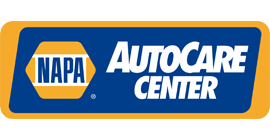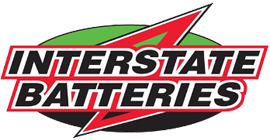
Archive for June 2021It's Brake Time (Brake Calipers)Posted June 27, 2021 12:27 PMRace car drivers have demonstrated the advantages of disc brakes, so most modern vehicles use them. Sometimes just the front wheels have disc brakes, but many vehicles now have them all the way around. A major component of the disc brake is called a caliper. It works by squeezing brake pads against the disc or rotor, kind of like a bicycle hand brake. The brake pads themselves are what contact the rotor, causing friction to build and the wheel to slow down, but it's the calipers that apply the pressure to the pads. Caliper design has evolved over the years, and there are two common types. One is called a floating caliper. It has one or two pistons on one side of the disc. When you push down the brake pedal, the piston or pistons in your caliper put pressure on that one side. A mechanism connected on the other side of the disc applies pressure as well, squeezing your disc so the vehicle stops. Floating calipers are less expensive since they have fewer parts. The other type is called a fixed caliper. They use pistons on both sides of the disc, sometimes several. They are often used in more high-performance or heavy-duty vehicles. Calipers can have rubber seals to keep out dirt, debris and moisture, but when that rubber wears out, sometimes the calipers can get contaminated. They can stick or start leaking; they can even rust. Then your caliper can get stuck applying that "squeeze" when you are not pressing on the brake pedal. Or they can get stuck in the other position, not applying stopping power when you press the pedal. When this happens, it's not unusual to feel your vehicle pull to one side when you brake. You might notice a burning smell from the constant friction if the caliper is stuck on, plus you may feel the heat from the wheel after you park and get out of your vehicle. Sometimes you'll hear a high-pitched sound or clunk if your calipers are binding up. That's your cue to have them checked out at your vehicle service center. If your calipers aren't working correctly, it can be a safety hazard. Sticking calipers can affect your ability to steer and stop; this is the kind of "brake time" you need so you can get them back on track and working properly. Auto Authority LLC Got it Covered! (Timing Cover Maintenance)Posted June 20, 2021 12:13 PMYou may have heard at one time or another about something called a timing belt or timing chain in your engine. And you may know that if they fail… well, let's just say that there can be some major engine damage. So obviously, we want our timing belts and chains to be in tip-top shape. One part that helps keep them running the way they should is the timing cover. As you can probably guess, it's something that covers the belt or chain. The timing cover protects both belts and chains from dirt and road debris. Timing belts also need to be lubricated so their covers allow them to be lubricated as well. They have a gasket that insures a good seal for the engine. If that gasket breaks or develops a leak, then engine oil can escape, and loss of lubrication is never good for an engine component. Other symptoms of a failed timing cover are leaking coolant, a metallic sound coming from the front of your engine or your Check Engine light coming on. You might also notice a drop in power when you're going uphill. It's important that your timing cover be in good condition and functioning properly. Your repair facility will check out that part of your engine to make sure gaskets are in good shape and the cover is doing the job it's meant to do. Catch that leaking or broken timing cover in time and your engine will thank you for avoiding some serious damage and an expensive repair. Auto Authority LLC Have a Ball! Know your Ball Joints (Ball Joints)Posted June 13, 2021 7:46 AMWe all have joints in our own skeletal system, but did you know your vehicle has some joints of its own? One of the most important is called a ball joint. One of the interesting things is that it's somewhat similar to the ball and socket joints we have in our hips and shoulders. A ball joint allows two parts it joins together to move in more than one direction at the same time. Think about your wheels. They have to move up and down when there are bumps in the road but in sideways directions when you are making a turn. As you can see, the ball joints are important for your steering and handling to work correctly. Since ball joints do so much, they can wear out and become loose. When the ball wears down or the socket gets worn, there can be too much play in them. It can get so bad that the ball can come out of the socket and your wheel can fall off, a dangerous situation. Ball joints can also seize up. Some of them are sealed and never require maintenance; others require periodic lubrication. Here are some signs that your ball joints are going bad:
The earlier a failing ball joint is discovered, the better. The best way is to have regular inspections by a technician. Your service facility will periodically check ball joints at intervals recommended by the manufacturer. The cost to replace them can vary widely depending on whether you have a vehicle with a 2-ball or 4-ball configuration. Also, sometimes just the joints can be replaced, but other times they are part of a larger control arm assembly that has to have all the parts replaced at the same time. Your vehicle's proper steering, handling and tire wear all contribute to a better, safer driving experience. Make sure your ball joints are up to the job. Auto Authority LLC When Your Air Bag Light Comes On (Illuminated Air Bag Light)Posted June 6, 2021 12:01 PMThere are some dashboard lights you should pay more attention to than others. One is the air bag light. If it's on and your vehicle is in an accident, your air bags probably won't do their job. Automakers began installing air bags in the late 1990's since they were mandatory in the United States, and manufacturers have included them in Canadian vehicles as well. Safety experts say using a seat belt in combination with an air bag gives passengers the best chance of surviving a crash and minimizing serious injury. The air bag warning light takes a few different forms. Some look like a picture of a belted passenger with an inflated air bag from a side view. Or there may be a warning light that says something like "Air Bag," "SRS" (for supplemental restraint system), "Airbag Deactivated" or "Air Bag Off." Different things cause the air bag light to come on. Your vehicle may have been in an accident during which, while the air bags didn't inflate, crash sensors were activated. Some of them may be connected with your vehicle's seat belts. A technician can reset the air bag if this has happened. Fuses can also blow which will cause the air bag light to come on. Another possible cause? A sensor that tells the vehicle's computer whether or not there is someone riding in the passenger front seat may be malfunctioning. Air bags are not for the do-it-yourselfer. They are sophisticated systems that require specialized training and equipment to diagnose and repair. If an air bag light is on, take it to a qualified service repair facility. One more thing: remember that safety experts have designed air bags to work in conjunction with seat belts for maximum protection in accidents. So always wear your seat belt. Auto Authority LLC | ||
SearchArchiveNovember 2011 (5)December 2011 (4) January 2012 (5) February 2012 (3) March 2012 (5) April 2012 (4) May 2012 (4) June 2012 (5) July 2012 (5) August 2012 (4) September 2012 (4) October 2012 (4) November 2012 (5) December 2012 (4) January 2013 (4) February 2013 (5) March 2013 (4) April 2013 (4) May 2013 (4) June 2013 (4) July 2013 (5) August 2013 (4) September 2013 (4) October 2013 (4) November 2013 (4) December 2013 (5) January 2014 (4) February 2014 (4) March 2014 (4) April 2014 (4) May 2014 (5) June 2014 (4) July 2014 (5) August 2014 (4) September 2014 (5) October 2014 (4) November 2014 (4) December 2014 (5) January 2015 (4) February 2015 (4) March 2015 (4) April 2015 (5) May 2015 (2) June 2015 (6) July 2015 (4) August 2015 (4) September 2015 (4) October 2015 (5) November 2015 (4) December 2015 (3) February 2016 (2) March 2016 (4) April 2016 (4) May 2016 (5) June 2016 (4) July 2016 (5) August 2016 (4) September 2016 (4) October 2016 (5) November 2016 (4) December 2016 (4) January 2017 (5) February 2017 (4) March 2017 (4) April 2017 (4) May 2017 (4) June 2017 (4) July 2017 (4) August 2017 (5) September 2017 (3) October 2017 (5) November 2017 (4) December 2017 (3) January 2018 (5) February 2018 (3) March 2018 (4) April 2018 (5) May 2018 (3) June 2018 (4) July 2018 (5) August 2018 (4) September 2018 (5) October 2018 (4) November 2018 (4) December 2018 (1) March 2019 (3) April 2019 (33) May 2019 (4) June 2019 (5) July 2019 (4) August 2019 (4) September 2019 (5) October 2019 (4) November 2019 (4) December 2019 (5) January 2020 (5) February 2020 (4) March 2020 (5) April 2020 (2) May 2020 (2) July 2020 (1) August 2020 (5) September 2020 (4) October 2020 (4) November 2020 (5) December 2020 (4) January 2021 (6) February 2021 (4) March 2021 (4) April 2021 (4) May 2021 (5) June 2021 (4) July 2021 (4) August 2021 (4) September 2021 (4) October 2021 (5) November 2021 (3) December 2021 (5) January 2022 (6) February 2022 (4) March 2022 (4) April 2022 (4) May 2022 (5) June 2022 (4) July 2022 (5) September 2022 (4) October 2022 (5) November 2022 (4) December 2022 (4) January 2023 (5) February 2023 (4) March 2023 (4) April 2023 (5) May 2023 (4) June 2023 (4) July 2023 (5) August 2023 (4) September 2023 (3) October 2023 (1) January 2024 (1) February 2024 (4) April 2024 (1) May 2024 (4) June 2024 (5) July 2024 (4) August 2024 (4) September 2024 (5) October 2024 (4) November 2024 (4) December 2024 (4) | CategoriesTire Rotation and Balancing (4)Fluids (10)Tires and Wheels (4)Parts (1)Maintenance (17)Automotive News (5)Shocks & Struts (4)Wheel Bearings (2)Service Standards (4)Fuel System (8)Tire Pressure Monitoring System (1)Air Conditioning (11)Headlamps (6)Safety (3)Diesel Maintenance (1)Inspection (5)Battery (13)Fuel Economy (8)Alignment (7)Brakes (17)Keys to a long lasting vehicle (2)Service Intervals (2)Exhaust (10)Timing Belt (5)Auto Safety (5)Transmission (5)Fuel Saving Tip: Slow Down (2)What Customers Should Know (83)Alternator (7)Check Engine Light (4)Steering (11)Dashboard (1)Windshield Wipers (3)Cooling System (9)Drive Train (4)Oil Change (9)Customer Detective Work (1)Older Vehicles (1)Winter Prep (5)Safe Driving (1)Spark Plugs (2)Suspension (2)Tires (12)Winter Tires (1)Water Pump (2)TPMS (3)Differential Service (2)Trip Inspection (2)Cabin Air Filter (2)Fuel Pump (1)Brake Service (6)PCV Valve (1)Transfer Case Service (1)Shocks and Struts (3)Engine Air Filter (3)Fuel Filter (1) | |
Partners








What our clients are saying about us
We have established longterm and stable partnerships with various clients thanks to our excellence in solving their automotive needs!
Absolutely the best mechanic I have ever been to in my 40 years on this planet. Honest, trustworthy, and reliable. I will definitely be back.

These Guys (and Gals!) are great. Love them. Trust them. If you are looking for a REPUTABLE mechanic for your car or truck, look no more. Just go there and see what I mean.
